The future of food and travel influencers
With the Covid-19 pandemic almost shutting down the global travel and hospitality industries, influencers in the sector are staring at an uncertain future


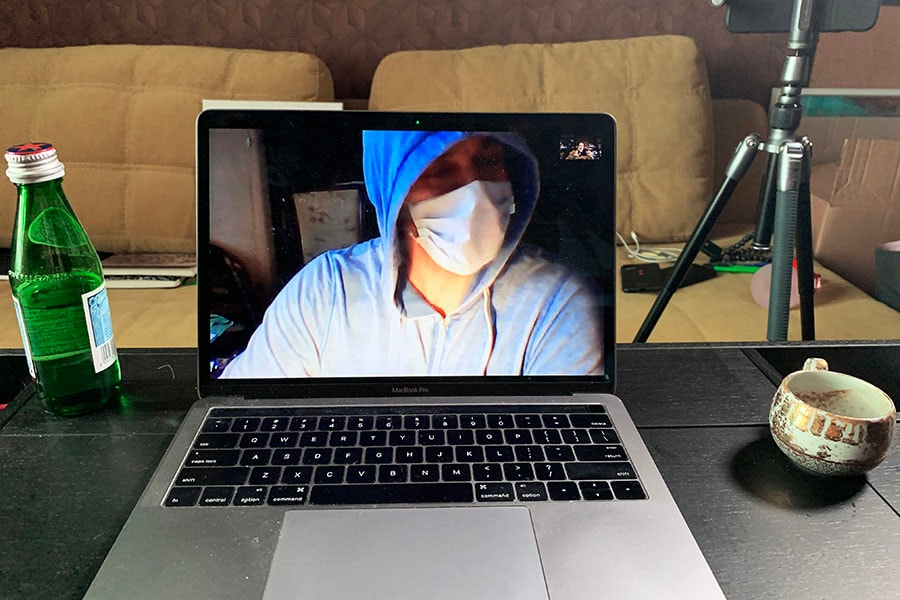 Celebrity Instagrammer Murad Osmann is now “travelling within his house” because of the lockdown
Celebrity Instagrammer Murad Osmann is now “travelling within his house” because of the lockdown
Image: Murad Osmann[br]Russian photographer Murad Osmann is best known in the world of Instagram as one half of the couple behind the ‘Follow me to’ series in which he travels the world with wife Natalia Zakharova. In the highly-stylised photographs, Osmann follows Zakharova, as they hold hands, through exotic locations, taking their 4 million followers with them.
But one of their recent posts showed Zakharova looking into a washing machine, as though she is looking out of an airplane window in another, she is in the kitchen with a saucepan in hand, cooking. “We are now travelling within the house,” laughs Osmann, as he speaks from his home in Moscow, where he is locked down. If the Covid-19 pandemic had not broken out across the world, the couple would have been in Peru. “A lot of travel plans have been cancelled, while others have been postponed,” says Osmann, named among the top three travel influencers in the world by Forbes in 2017. “In May, we were supposed to go to the Cancun music festival in Mexico, but that has been postponed. There were other plans of travelling to Abu Dhabi, Dubai, Europe and the US. Everything’s cancelled.”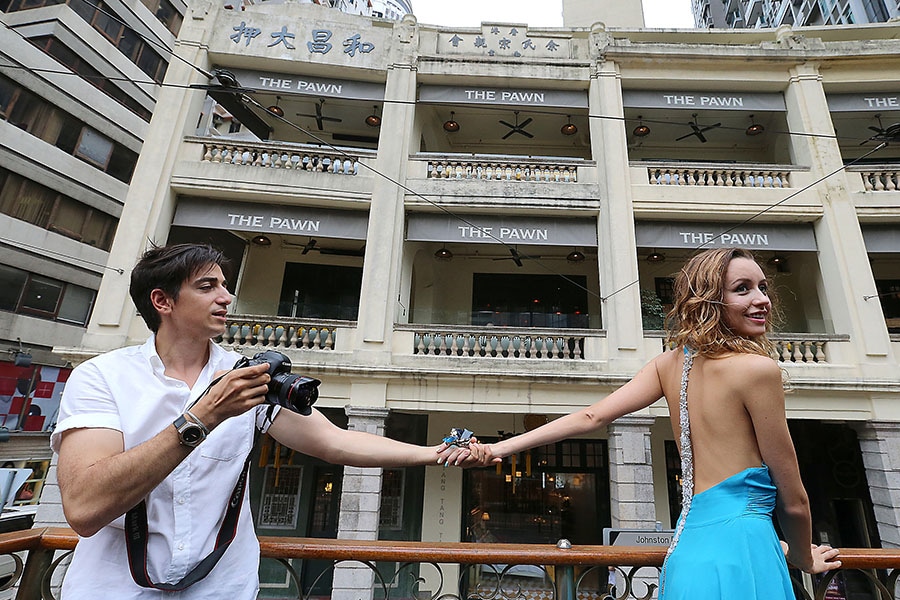 A still from the 2014 ‘Girlfriend Series’ by him and wife Natalia Zakharova, on a tram in Hong Kong
A still from the 2014 ‘Girlfriend Series’ by him and wife Natalia Zakharova, on a tram in Hong Kong
Image: K. Y. Cheng / So uth China Morning Post via Getty Images[br]Over the last five years, the world of travel and food influencers had boomed, along with the tourism and hospitality industries across the globe. According to the United Nations’ World Tourism Organisation (UNWTO), international tourist arrivals worldwide grew by 6 percent in 2017 as well as 2018, and by 4 percent in 2019, to reach 1.5 billion. Riding this wave of global tourism, and fuelling it in turn, are the thousands of food and travel influencers who market and promote destinations and events through the content they create for social media platforms.
According to Business Insider, the influencer marketing industry was worth $8 billion in 2019 with millions of followers, especially among millennials and Gen Z, in December 2019, it predicted the market was expected to grow to $15 billion by 2022. In January 2020, the UNWTO also predicted a growth of 3 to 4 percent in international tourist arrivals worldwide this year.
But that was in a pre-Covid-19 world.
By March 27, the UNWTO said it expected international tourist arrivals to decline by 20 to 30 percent in 2020, translating into a loss of $300 billion to $450 billion in international tourism receipts (expenditures by international inbound visitors), almost one-third of the $1.5 trillion generated globally. On March 25, International Air Transport Association said it estimated revenues from passenger flights to plummet by $252 billion, or 44 percent, below 2019’s figure.
As airlines struggle to stay afloat, seeking bailouts from governments, and global tourism grinds to a complete stop, travel and food influencers are seeing their corporate partnerships come to an abrupt halt, and earnings dry up. Himanshu Sehgal, a Delhi-based food vlogger who travels the world to showcase regional cuisine to the 47,800 followers of his Instagram handle My Yellow Plate, says, “The pandemic and consequent lockdown have had a huge impact on work. The last trip I made was in December to Europe, and it was good to create content. Based on that trip, I planned to cover 10 new countries this year. But now I have to change my plans, and find new ways to create content.” Sehgal has partnered with the tourism boards of countries such as Malaysia, Singapore and Germany. “But there are no such partnerships coming up right now,” he says. “I have lost about 80 percent of my earnings because of this.” Eric Stoen’s Instagram handle and website called TravelBabbo document his travels with wife and three children. He specialises in writing about family trips
Eric Stoen’s Instagram handle and website called TravelBabbo document his travels with wife and three children. He specialises in writing about family trips
Image: Eric Stoen
Looking at a similar drop in earnings is Eric Stoen, halfway across the world from Sehgal, in California, US. “In March, we were supposed to go to Italy, Turkey and Germany Nicaragua in April for a family trip during the school break, and Greece in the first week of June,” says Stoen, whose Instagram handle and website called TravelBabbo document his travels with wife and three children. Specialising in writing about family trips, he partners with various corporate entities such as tourism boards, airlines, hotels and credit cards. “My revenue year-to-date is down by 35 percent, but since January and February were good, it has helped,” he says. “It’s hard to compare specific months year-to-year since I could have $15,000 in revenue in one month and $2,000 the next month, depending on what campaigns I’ve completed. But if this [lockdowns] continues through the fall, I could see my total revenue being down by 80 percent.”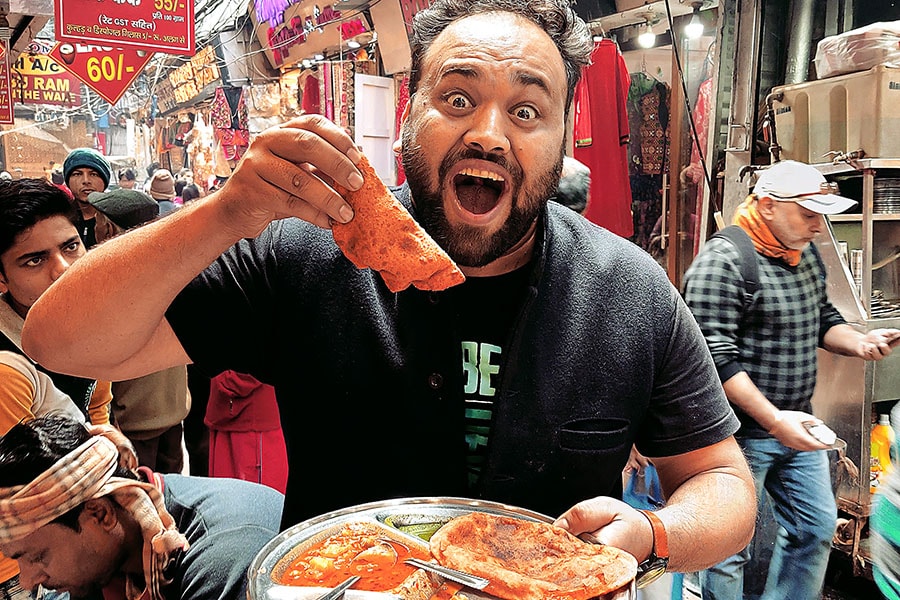 Karan Dua (below) has a YouTube channel—Dil Se Foodie
Karan Dua (below) has a YouTube channel—Dil Se Foodie
Image: Karan DuaKaran Dua, a food vlogger who started his YouTube channel Dil Se Foodie three years ago and now has a following of 1.21 million, says revenues from his channel have fallen by 40 to 50 percent. With a focus on street food and local restaurants, Dua travels extensively within India and his hometown Delhi, documenting the best places to tuck into kulchas, chaat, kathi rolls, pakodas and the likes. And that entire sector has shut down overnight.
Keeping followers hooked
Social media is a world where professional content creators need to keep posting fresh content to remain within the attention radar of their followers. A drop in quantity or quality often directly translates into a drop in followers and, in turn, their earnings. So when the source of content—the travel and hospitality industries—has dried up, how do they keep their followers engaged?
Stoen says although traffic to his blog is down, social media engagement has increased significantly because people are bored and are spending more time on their digital devices. “Just because people cannot travel right now, I am not going to switch my business to recipes and puzzle reviews. People still want to see pretty pictures and learn about new destinations. I am also highlighting some of the small, local businesses that we have found on our travels, and hoping that my followers are taking note of them, and patronise them.”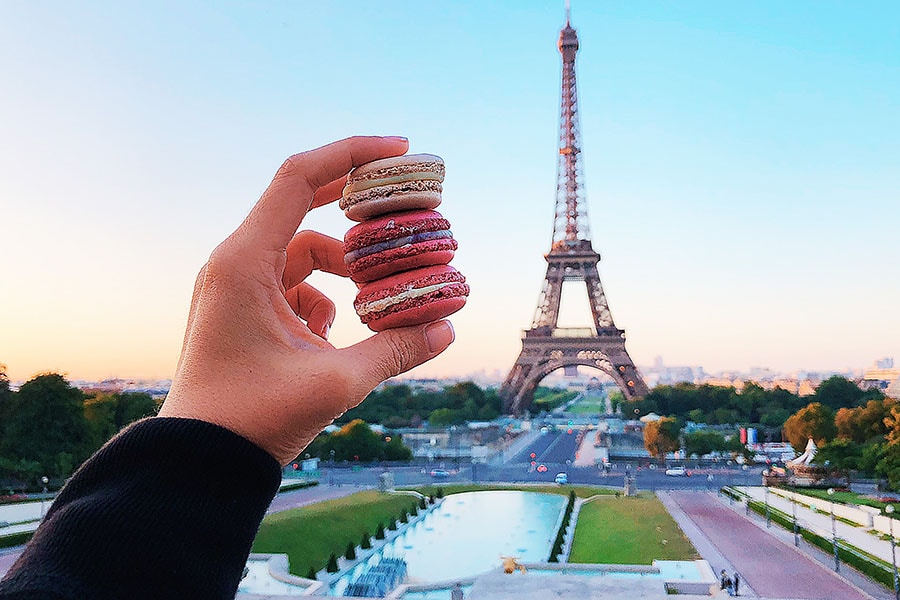 Melissa Hei, a Singapore-based Instagram-mer, posts under the name Girl-EatWorld
Melissa Hei, a Singapore-based Instagram-mer, posts under the name Girl-EatWorld
Image: Melissa Hei Melissa Hei, a Singapore-based blogger and Instagrammer with 375,000 followers who posts under the name GirlEatWorld, says travel Instagrammers are seeing a significant drop in engagement from followers companies and brands too are not interested in partnerships this year, despite this being the peak season for travel.
Content creators who focus on food, or at least food along with travel, have adapted to the lockdowns in different ways. “When you are under lockdown at home, there are only two kinds of content that you can produce—comedy sketches or recipes,” says Dua. “But even with comedy, you need other people to edit the content. Videos of home-cooked food is what you can produce on your own.”
Dua has been posting videos of home-cooked dishes and, in the process, found a whole new profile of audience. “I made a video of chicken biryani and posted it on YouTube and Facebook. While on YouTube it got about 64,000 views, on Facebook it got 16.7 million,” he says. “This is because the audience on the two platforms is different. The ones on YouTube are more interested in street food and not in cooking. Whereas the ones on Facebook are more diverse. And given the lockdown, this audience is spending more time on social media.”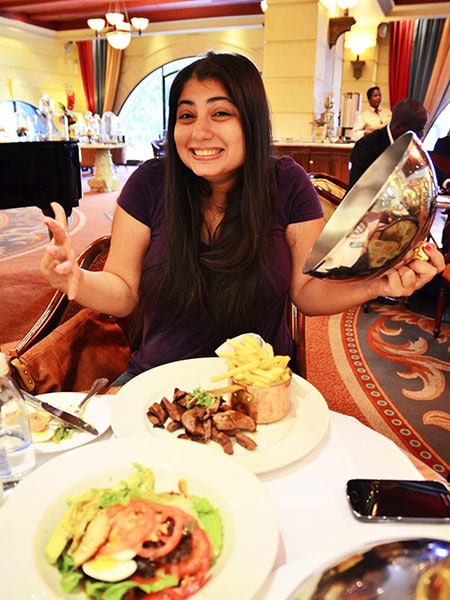 Roxanne Bamboat creates travel and food-related content under the name The Tiny Taster
Roxanne Bamboat creates travel and food-related content under the name The Tiny Taster
Image: Roxanne BamboatRoxanne Bamboat, who creates travel and food-related content under the name The Tiny Taster, also wants to follow Dua’s template of focusing on simple recipes with ingredients that are readily available. “I just don’t understand how bloggers can bake so much while living under lockdown,” she exclaims, speaking from her home in Mumbai, which happens to be a Covid-19 hotspot. “Where are they getting the cocoa from?” Because of the lockdown, Bamboat has decided to stay away from travel content—“it is almost a career suicide, but I feel this is not the time and place to do that”—and focus on comfort food in times of stress and anxiety. “I don’t think anyone gives a hoot about fancy meals at this time, and would instead want to go back to something comforting, like a plate of rice and dal, or cutlets that my grandmother made,” she says.
Consequently, she is putting up posts about homemade comfort food, such as akuri, which is a part of her Parsi heritage. “It is a simple dish made with eggs, and the response has been great. I am trying to avoid recipes with even meat, since I know it may not be available everywhere. I feel this is a time to be mindful,” she adds.
Sehgal, too, is trying his hand at home-cooking, along with partnerships with FMCG brands. “We are still getting partnerships with some F&B brands. But they are not the same as tourism boards there is a huge difference in earnings. And even if F&B brands are promoting their products, these products may not be available in shops around you right now. So, Nestle might want to promote KitKat, and you can get it in a shop. But if ITC wants to promote a Dalgona coffee kit, I don’t know if it is even available in the shops.”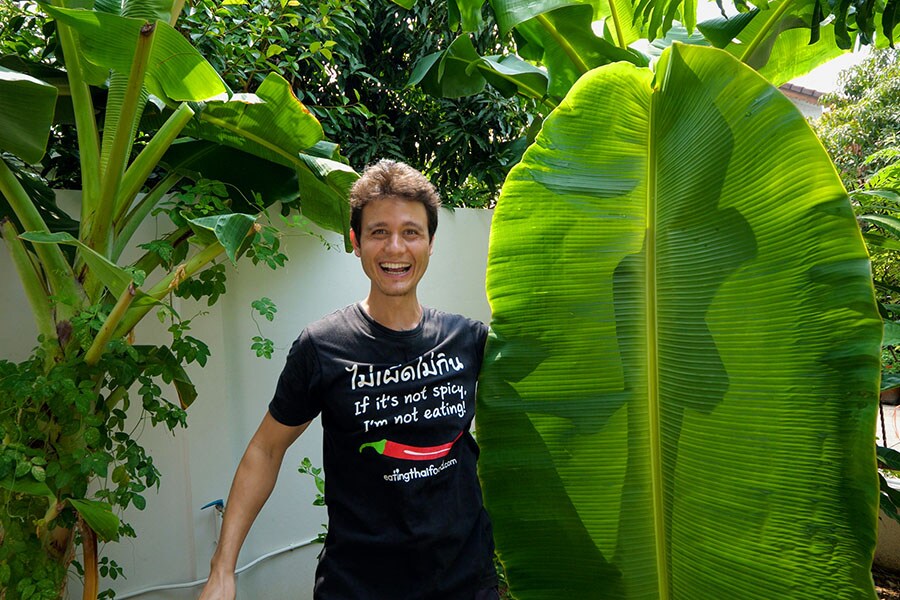 Bangkok-based food vlogger Mark Wiens orders street food via delivery services and eats on-camera
Bangkok-based food vlogger Mark Wiens orders street food via delivery services and eats on-camera
Image: Mark Wiens
In countries where home deliveries are still working, there are a few more options for food vloggers. Mark Wiens is a Bangkok-based food vlogger with 5.92 million subscribers on his YouTube channel. “Times like these are about adapting to the situation, and being more flexible,” says the vlogger who travels around the world, exploring and sampling street food. “In Bangkok, street food and restaurants are open for takeaway orders. So I have done reviews by ordering food through delivery services and eating them on-camera. A lot of people are stuck at home and they relate to you when you make videos at home.” Wiens is also equipped with footage from a couple of trips he took earlier in the year, and is now putting them out to keep up engagement.
What lies ahead
As governments across the world look towards easing lockdown conditions in their countries, the impact on travel and tourism remains uncertain. Most influencers feel that travelling across countries will not be the same, at least in the foreseeable future, with new rules and restrictions coming into place.
“Where travel is concerned, it is going to be a tricky thing to decide if it is safe or not,” says Wiens. “Also because the situation in one country, or even in one city, is not the same as another.” He adds that even if he is not able to travel to other countries, he hopes to be travelling within Thailand and making new content.
Stoen feels people will travel differently once the travel restrictions are eased. “A lot of people will take smaller trips closer to home, especially to places where they can drive. And there will be a lot of people who will book tickets immediately after the lockdown is lifted. But they will prefer individual travel, and not with a lot of people on buses, or cruise ships. People will appreciate travel more, and a slow recovery is preferable in some places such as Venice, which has seen over-tourism in recent years.”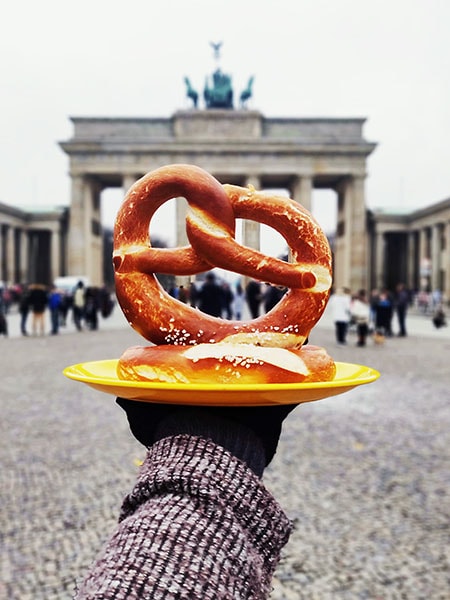 Himanshu Sehgal, a Delhi-based food blogger, travels the world to showcase regional cuisine to his followers
Himanshu Sehgal, a Delhi-based food blogger, travels the world to showcase regional cuisine to his followers
Image: Himanshu Sehgal But Hei is more pessimistic. “Travel may not recover until next year, and even after countries begin to lift their restrictions, people might be apprehensive about travelling unless there is a Covid-19 vaccine by then. Personally, I am pretty happy staying at home because I don’t want to contract anything!”
“When the pandemic is over, influencers will be one of the key instruments in reviving the travel industry,” says Osmann. “You cannot advertise on billboards now and spend huge budgets on ads. But if consumers see a blogger right there and right now, especially genuine content creators, it will build confidence. Bloggers are a quick remedy and have a quicker effect on the general audience to indicate that things are getting better.”
Bamboat feels that even after the lockdowns are relaxed, things will not normalise soon since the food and travel industries will take time to revive. “The influencer market gravitates towards whatever pays them. So instead of focusing on food and travel, it is possible they will become lifestyle bloggers,” she says. “Retail and fashion industries pay more, or moto-vlogging. No one will stop being food bloggers, but instead widen their repertoire.”
First Published: May 14, 2020, 12:18
Subscribe Now